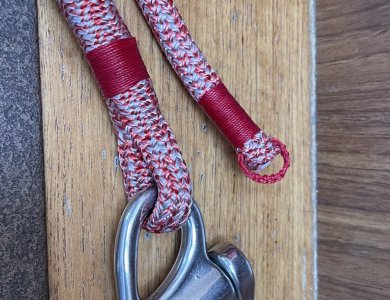pij27
Member
Checking my running rigging, have noticed my mainsail halyard has frayed and the outer sheath has pulled back a bit. The replace is it just a simple case of butting the new rope to the old, securing with either some tape or twine and then pulling through? Or is there something else should be considering? The boat is a Kingfisher 22ft with a mast height of 24ft. I will probably replace both the mainsail and the jib halyards as both look like not been done for a few years.

